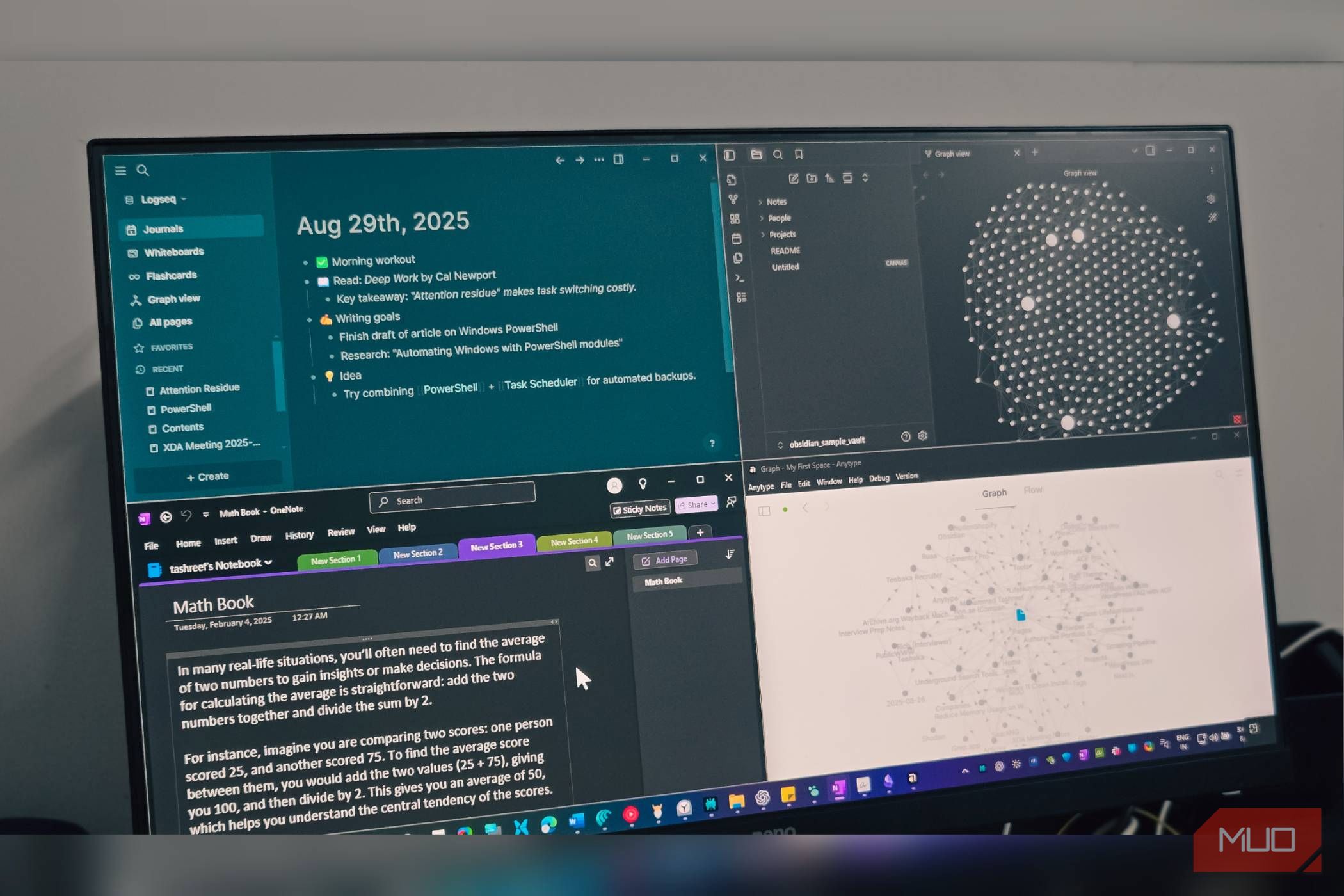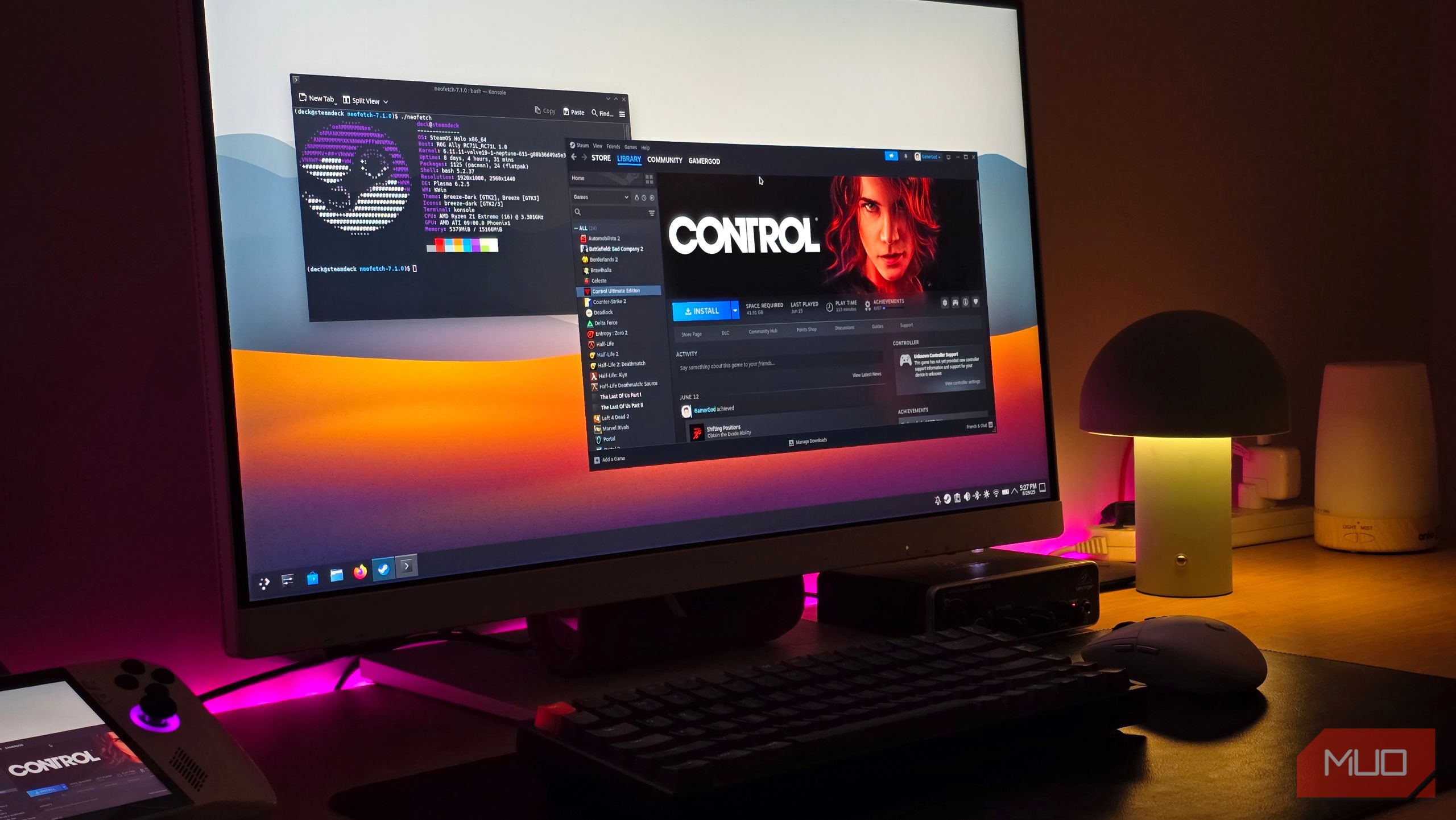Now Reading: Top Free Note-Taking Apps with Seamless Syncing
-
01
Top Free Note-Taking Apps with Seamless Syncing
Top Free Note-Taking Apps with Seamless Syncing

Quick Summary:
- Obsidian:
– Stores notes as plain Markdown files locally on your device.
– Offers unlimited notes, numerous plugins, custom themes, and a graph view for idea connections.
– Paid sync option costs $5/month; free sync options include Google Drive with DriveSync or peer-to-peer syncing via Syncthing.
– Pros: Feature-rich, open format; Cons: Learning curve and clunky mobile editing for complex tasks.
- Logseq:
– Outline-focused rather than document-oriented note management tool. Emphasizes hierarchical association through nested bullet points.
– Paid sync option ($5/month) with the same free alternatives as Obsidian (Google Drive + DriveSync or Syncthing).
– Ideal for students or researchers handling PDFs/videos; less compatible with long-form writing due to its block structure system.
Indian Opinion Analysis:
The rise of feature-rich note-taking apps like Obsidian and Logseq demonstrates evolving trends in digital productivity tools focused on flexibility and personal control of data. For Indian users, thes apps offer cost-effective alternatives to paid services through DIY syncing setups using widely available platforms like Google drive. The availability of encryption-driven solutions makes them notably relevant in a landscape where data security remains an increasing concern among tech users in India.
Adopting accessible software tools like these could greatly benefit India’s large student population by enhancing educational workflows without additional financial strain. Though, the learning curve associated with advanced note management systems may limit their adoption beyond tech-savvy individuals unless there is widespread awareness and training initiatives focusing on such tools.
Read more hereQuick summary:
- Standard Notes offers a minimalist interface with encrypted syncing across devices, ideal for handling sensitive data. Free version supports plain text only; premium features like formatting start at $63/year.
- simplenote provides distraction-free note-taking and organizes entries with tags. Supports unlimited device sync and version history but lacks advanced features like folders or attachments.
- Google Keep integrates seamlessly with other Google services, offers basic formatting options, collaboration tools, color-coded notes, and archives completed tasks within shared 15GB free storage under a Google account.
Featured images:
Indian Opinion Analysis:
India’s increasing adoption of digital tools highlights the relevance of efficient note-taking apps in both professional and educational settings in the country. The presence of apps like Standard Notes, Simplenote, and Google keep could cater to diverse user needs-ranging from privacy-focused individuals to students looking for basic collaborative features or professionals integrating workflows within Google ecosystem products.As more Indians rely on smartphones for productivity tasks due to affordability and accessibility ecosystems (Android/iOS), these offerings may help streamline documentation processes while addressing organizational challenges posed by work-from-home trends or hybrid learning setups prevalent post-pandemic. Though, decisions behind paid upgrades might need careful deliberation due to affordability sensitivities in India’s user base lacking disposable income parity with developed markets.
For further details: Read MoreQuick Summary
- The article reviews free note-taking apps that offer flawless synchronization.
- Google Keep is praised for instant syncing and location-based reminders, but its lack of organization and formatting limits functionality for advanced users.
– Features include real-time voice transcription.
- Microsoft OneNote offers more features than google Keep, including handwriting recognition, audio recording, OCR for images, and stylus compatibility.
– It provides a notebook-style interface with structured sections and pages synced via OneDrive’s free 5GB storage across multiple platforms (Windows, Mac, iOS, Android).
- Both apps are free but cater to different needs depending on preferences for simplicity or complexity in note-taking tasks.


Indian Opinion Analysis
The comparison between Google Keep and Microsoft OneNote presents valuable insights into the evolving role of productivity tools in modern ecosystems where seamless data synchronization is crucial. For India’s growing digital population-comprising professionals, students, and small businesses-the availability of accessible tools like these may further democratize technology usage by enabling better organization at low cost.While Google’s simplicity caters well to quick tasks such as grocery lists or reminders across rural areas where smartphones dominate usage patterns, Microsoft’s multifaceted offering could appeal to urban users who demand refined solutions for complex projects.
The broader takeaway lies in the adoption trends: with increased smartphone penetration across India alongside steady internet improvements (e.g., initiatives like bharatnet), both apps reflect potential in catering to distinct demographics based on access levels and user priorities. India’s diverse market could well benefit from continued innovation around usability tailored specifically to Indian challenges such as multilingual support or offline compatibility.























